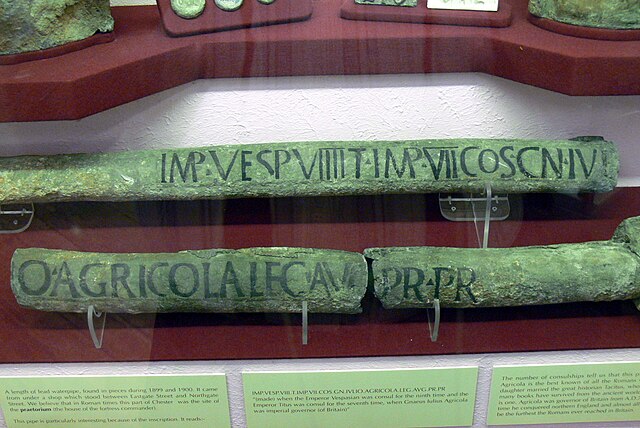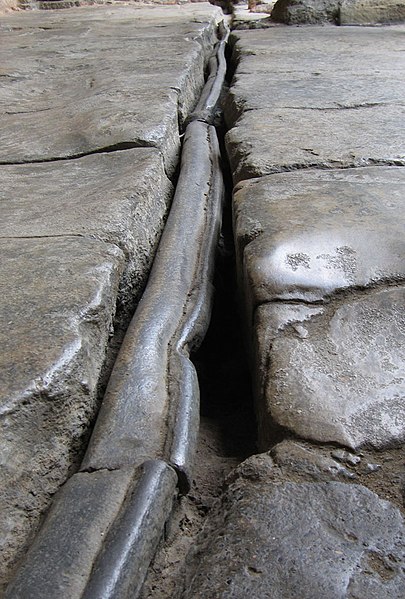Roman lead pipe inscription
A Roman lead pipe inscription is a Latin inscription on a Roman water pipe made of lead which provides brief information on its manufacturer and owner, often the reigning emperor himself as the supreme authority. The identification marks were created by full text stamps.
Water pipe with Latin inscription from the reign of Vespasian. The text is unusual for being sunk into the surface and its sizable length of 1 m.
Uninscribed lead pipe with a folded seam, at the Roman thermae of Bath, England
Lead pipe stamp of the Legio XIV Gemina
Plumbing is any system that conveys fluids for a wide range of applications. Plumbing uses pipes, valves, plumbing fixtures, tanks, and other apparatuses to convey fluids. Heating and cooling (HVAC), waste removal, and potable water delivery are among the most common uses for plumbing, but it is not limited to these applications. The word derives from the Latin for lead, plumbum, as the first effective pipes used in the Roman era were lead pipes.
A complex arrangement of rigid steel piping and stop valves regulate flow to various parts of the building, with an evident preference for right-angle pipe bends and orthogonal pipe routes
Roman lead pipe with a folded seam, at the Roman Baths in Bath, England
Copper piping system in a building
A system of copper water tubes used in a radiator heating system






